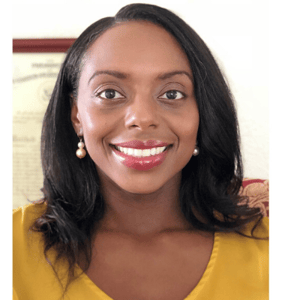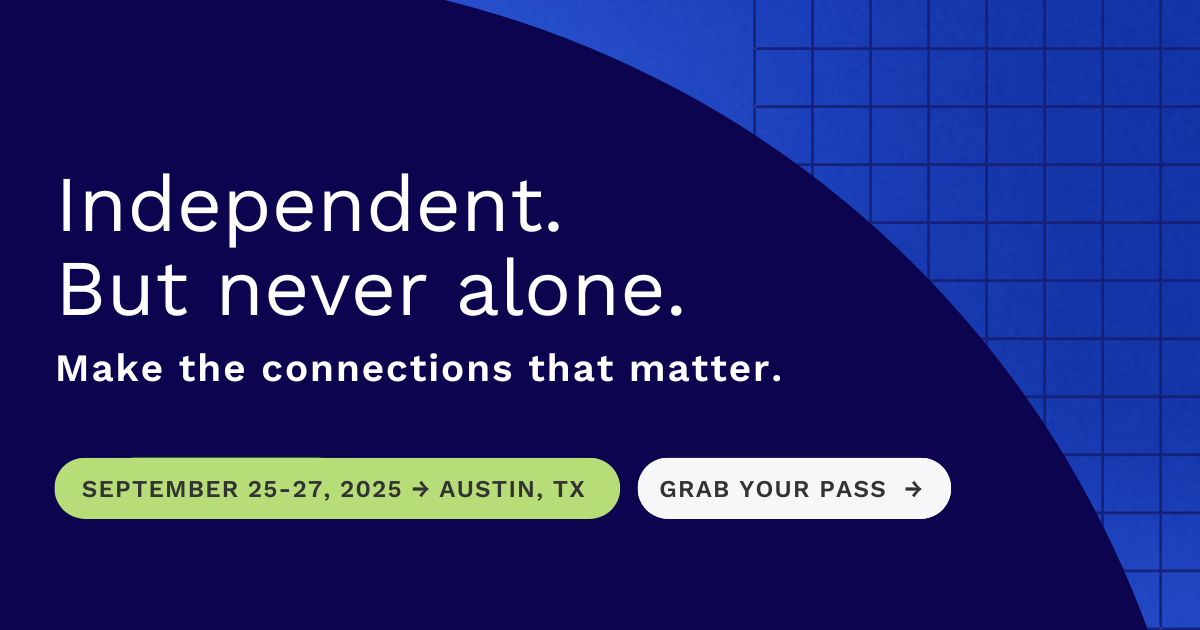Going Deeper with Clients: Building Trust, Integrating Financial Coaching, and Raising Awareness of Implicit Biases
Share this
Finances have, and will for the foreseeable future, be a challenging topic of discussion and management, for a significant number of Americans. Several studies, including the American Psychological Associations’ Stress in America Survey demonstrates that many Americans experience stress related to finances, especially Generations X, Y, and Z. This financial stress, paired with minimal financial education and literacy, results in poor money management and decision-making, leading to further distress.
Knowing this, one could make the healthy assumption that most individuals would seek the expertise of a financial advisor. However, only 35% to 38% of Americans say they would consult a financial advisor. Over 30% of those polled in the 2017 Personal Capital Financial Trust Report believe that a financial advisor will take advantage of them; and of those who elect not to work with a financial advisor, 45% cited lack of trust as the primary reason.
Gaining Trust
Financial advisors, especially fee-only advisors, may have a better reputation amongst consumers. However, they are likely to be unfairly categorized with other financial professionals and institutions. Therefore, they must still work to gain potential clients’ trust.
To do so, financial advisors must build their credibility. Membership in an organization, such as XYPN, with a clear mission and values set is an important start. The next step is building personal credibility as financial planners tend to be their own “brand.”
Stephen Covey who authored the book, The Speed of Trust, identified four core aspects of credibility. Those with high credibility can answer the following questions in the affirmative:
- Integrity: Do your actions match your values and beliefs? Are you open and humble? Do you consistently keep your commitments to yourself and others?
- Intent: Are you motivated by genuine care and concern for your clients? Is it clear that you are acting out of a desire for mutual benefit for you and your clients?
- Capabilities: Are you aware of your strengths and weaknesses? And do you address each appropriately? Are you continuously learning and refining your skillset?
- Results: Are you just staying busy or generating results? Do you convey confidence about the results you can deliver? Are you continuing to excel or resting on your past performance?
Once credibility is established, the next step is to engage in high trust behaviors. In Stephen Covey’s The Speed of Trust, 13 behaviors of high trust individuals are outlined. While several of these behaviors overlap with developing credibility, the following that stand out:
- Demonstrate transparency: Be genuine and open. Share even difficult information.
- Right Wrongs: Apologize when you are in the wrong and repair mistakes, when feasible.
- Show Loyalty: Give credit where it is due and be loyal, even in the absence of others.
- Confront Reality: Address challenges directly.
- Be Accountable: Take responsibility for results or lack thereof.
- Listen First: Avoid making assumptions.
- Extend Trust: Trust others and provide resources when assigning responsibilities.
Going Deeper: Maintaining/Improving Gains in Trust
Financial advisors must not only work to gain trust, they must also maintain and/or increase trust in their client relationships. Incorporating concepts of financial coaching, or working with a financial coach, can be a great way to enhance trust, understanding of the client, and information-sharing in the client-advisor relationship. Additionally, this can lead to more efficient communication and execution of financial advice and plans. The following provides an example of how financial coaching concepts can be built into the financial planning process.
- Discovery Phase: Ask and learn more about clients’ family patterns and history related to money. Were there financial obstacles and stated, or implicit, rules around money? Begin to identify how the client sees the world, their personal values, and their beliefs about money. Consider if financial therapy/coaching may be helpful for this client.
- Design Phase: Based on the information from the discovery phase, identify the best course of action for the client. More importantly, identify what barriers may limit clients from working toward their financial goals. Begin to identify how prepared the client is to make necessary life changes to meet their goals.
- Implementation/Compliance Phase: Continue to check in with clients to ensure that the current trajectory and financial plan continues to match their values. Model clear and open communication and encourage clients to discuss finances with their support groups.
Finally, developing trust requires a deep level of self-awareness, and raising awareness of our own biases is an important part of that self-discovery. Additionally, awareness of our biases can limit breakdowns in trust. Implicit biases can easily creep in and interfere with the goal of working toward client’s best interest. Being proactive in identifying and making appropriate steps to limit our biases will reduce assumptions about clients, ensure clients feel heard, and help financial advisors to make recommendations based on the client’s values and best interests as opposed to advisors’ biases.
It is important to note that everyone has biases. They are unconscious and often without intention. These biases do not always align with your stated beliefs. For example, you can believe in religious freedom and have a negative perception or bias against a specific religion or faith group. Implicit bias has real-world effects and have been demonstrated to impact everything from employment to medical decisions.
The good news is that they are changeable. With effort, we can replace our biases with new thoughts. To do so, we must first become aware of the biases we hold. Harvard’s Project Implicit allows individuals to find out their biases about a variety of categories, including race, weight, disability, and more.
Once aware of your biases, try to spend some time engaged with members of that group and simply listen to their lived experiences. Additionally, consider the power distance in your relationship with your clients. You are the expert in an area that causes them significant stress and anxiety. To balance that power and limit the effects of bias, learn about their histories and values (as suggested in the integrating financial coaching section above) and utilize their language.
Finally, consider the commonalities amongst yourself and the group(s) you may have some negative bias toward. Try to hold onto those shared characteristics while also embracing the differences. The most important aspect of reducing bias is being motivated to do so.
When clients come to financial advisors, they are requesting your expertise, your guidance, and your commitment. Whether they say it directly or not, they are letting go of some control and trusting the financial advisor to prioritize their best interests.
How you initially gain, continue to nurture, and ultimately maintain that trust is an individual, yet somewhat universal, process. Starting with these core steps of building credibility, engaging in high trust behaviors, integrating financial coaching concepts, and increasing awareness of ones’ own biases provides a solid foundation of trust and improves client-advisor relationships.
 About the Author
About the Author
Sadé Soares, co-founder and COO of Hui Malama Advisors, holds her PhD in Clinical Psychology, and is a West Point graduate, an Army officer, wife, and mother of two. A native of Trinidad and Tobago, Sade’s passion for living a financially and emotionally healthy life stemmed from her early experiences as an immigrant in New York City. Upon joining the military, she witnessed others’ continuous challenges with financial, relationship, and emotional health. Sade’s road to coaching others to live a financially and emotionally healthy life was solidified when her husband, Abel, suggested they go into business together and shared his vision for providing a three-pronged approach to financial well-being: financial planning, financial compliance (tax & accounting) and psychological coaching. Sade believes that caring for the “whole” person is necessary when working toward an abundant and healthy life. Sade is excited to be joining the world of entrepreneurship; and she has invested in several other businesses, as well.
Share this
- Advisor Posts (433)
- Fee-only advisor (388)
- Advice (316)
- Business Development (245)
- Independent Financial Advisor (204)
- Growing Your Firm (160)
- Marketing (132)
- Financial Planning (104)
- What Would Arlene Say (WWAS) (81)
- Firm Ownership (78)
- Business Coach (77)
- Training (76)
- Compliance (71)
- Business (69)
- Building Your Firm (68)
- Financial Advisors (65)
- Online Marketing (61)
- Events (60)
- Starting a Firm (50)
- From XYPN Members (48)
- Technology (48)
- Launching a firm (45)
- Advisors (42)
- Entrepreneurship (39)
- Taxes (39)
- Staffing & HR (38)
- Networking & Community (33)
- Interviews and Case Studies (32)
- Investment Management (32)
- XYPN Invest (28)
- Tax Preparation (27)
- Business Owner (25)
- Social Responsibility (25)
- Sales (24)
- Small Business Owner (20)
- Industry Trends & Insights (19)
- From XYPN Invest (18)
- Financial Planners (17)
- Independent Financial Planner (17)
- XYPN (17)
- Leadership & Vision (16)
- XYPN News (16)
- Tech Stack (15)
- How to be a Financial Advisor (14)
- RIA (14)
- Investing (13)
- Media (13)
- NextGen (13)
- Press Mentions (13)
- Financial Education (12)
- Goals (12)
- RIA Owner (12)
- XYPN Membership (12)
- Assets Under Management (AUM) (11)
- First Year (11)
- Niche (11)
- SEC (10)
- Advisor Success (9)
- RIA Registration (9)
- Communication (8)
- Lessons (8)
- Study Group (8)
- Time Management (8)
- Virtual Advisor (8)
- Growth (7)
- Mental Health (7)
- Pricing Models (7)
- From Our Advisors (6)
- Independent RIA (6)
- Money Management (6)
- Motivation (6)
- Preparing to Launch (6)
- Processes (6)
- Risk and Investing (6)
- Automation (5)
- Behavioral Finance (5)
- Broker-Dealers (5)
- College Planning (5)
- Filing Status (5)
- How I Did It series (5)
- Investment Planner (5)
- Michael Kitces (5)
- Preparing to Launch (5)
- Retirement (5)
- S Corpration (5)
- Scaling (5)
- Support System (5)
- TAMP (5)
- Wealth (5)
- Year-End (5)
- Bear Market (4)
- CFP Certification (4)
- Outsourcing (4)
- Selling a Firm (4)
- Small Business (4)
- State Registration (4)
- Succession Plans (4)
- Benchmarking Study (3)
- Bookkeeping (3)
- Budgeting (3)
- ESG Investing (3)
- Emotional Decisions (3)
- Engagement (3)
- Fiduciary (3)
- Financial Life Planning (3)
- Getting Leads (3)
- IRA (3)
- Life planning (3)
- Lifestyle practice (3)
- Membership (3)
- Millennials (3)
- Monthly Retainer Model (3)
- Monthly Subscription Model (3)
- Partnership (3)
- Pricing (3)
- RIA Audit (3)
- Recordkeeping (3)
- Risk Assessment (3)
- Staying Relevant (3)
- Wellness (3)
- Work Life Balance (3)
- Advice-Only Planning (2)
- Building Your Firm (2)
- Career Changers (2)
- Charitable Donations (2)
- Community Property (2)
- Design (2)
- Differentiation (2)
- Exchange-Traded Funds (ETF) (2)
- FINRA (2)
- Finding Your Why (2)
- Graphic design (2)
- Growing Income (2)
- Health Care (2)
- Inflation (2)
- Key performance indicator (KPI) (2)
- Keynote (2)
- Negative Rates (2)
- Operations (2)
- Organization (2)
- Outsourced Asset Management (2)
- Outsourced Bookkeeping (2)
- Portfolio Management (2)
- Productivity (2)
- Psychology (2)
- Quickbooks (2)
- Recommended Reading (2)
- Recruiting (2)
- Registered Representative (2)
- Registration (2)
- Restricted Stock Units (RSU) (2)
- Start Ups (2)
- Stock Options (2)
- Team Communication (2)
- Virtual Assistant (2)
- Virtual Paraplanner (2)
- Accounting (1)
- Arlene Moss (1)
- Assistant (1)
- Bonds (1)
- Bull Market (1)
- Careers (1)
- Certified Public Accountant (CPA) (1)
- Childcare (1)
- Client Acquisition (1)
- Client Services (1)
- Common Financial Mistakes (1)
- Consulting (1)
- Consumerism (1)
- Credit (1)
- Custodians (1)
- Custody Rule (1)
- Data (1)
- Daycare (1)
- Definitions (1)
- Designations (1)
- Direct Indexing (1)
- Disasters (1)
- Earn More (1)
- Family (1)
- Fidelity (1)
- Finance (1)
- Financial Freedom (1)
- Financial Goals (1)
- Financial Life Management (1)
- Financial Success (1)
- Financial Wellness (1)
- Form 8606 (1)
- Form 8915-E (1)
- Grief (1)
- Guide (1)
- How to Budget (1)
- Impostor Syndrome (1)
- Interns (1)
- Investor Policy Statement (IPS) (1)
- Job burnout (1)
- Liquidating your business (1)
- Loans (1)
- Moving Forward (1)
- Part Time (1)
- Paying Yourself (1)
- Paystub (1)
- Perfectionism (1)
- Project Management (1)
- Projecting Returns (1)
- Purpose (1)
- Quarterly Estimated Payments (1)
- RIA Operations (1)
- Recession (1)
- Referrals (1)
- Regulations (1)
- Regulators (1)
- Reinvention (1)
- Relationships (1)
- Remote (1)
- Required Minimum Distributions (RMD) (1)
- Risk Management (1)
- Roth Conversations (1)
- Roth IRA (1)
- Sabbatical (1)
- Spending (1)
- Strategy (1)
- Systems (1)
- Target Audience (1)
- Teamwork (1)
- Terms (1)
- To-Do List (1)
- Traditional IRA (1)
- Transitions (1)
- Virtual (1)
- Vulnerability (1)
- XYPN Books (1)
Subscribe by email
You May Also Like
These Related Stories

What’s In It For Me? How Diversity in Financial Planning Benefits Us All

Burnout or Compassion Fatigue? What’s the Difference, How Advisors Can Cope, and Strategies for Creating Resilience





